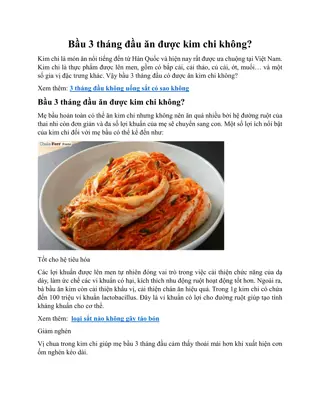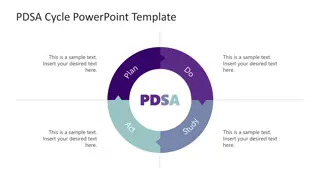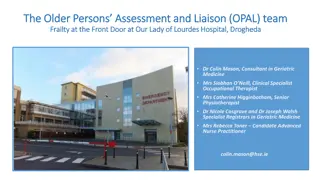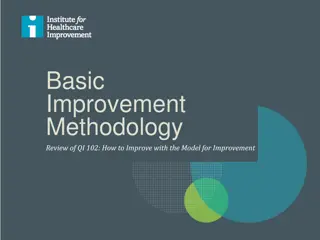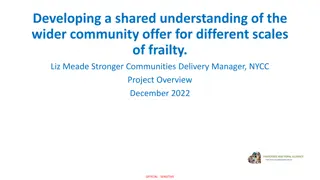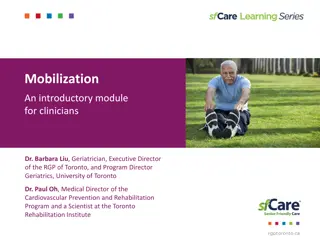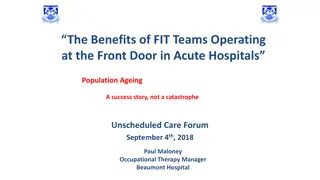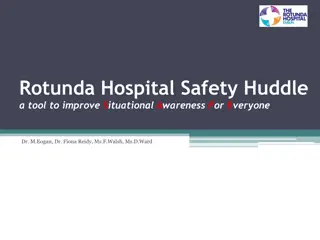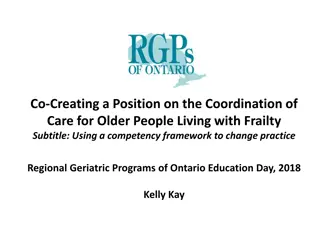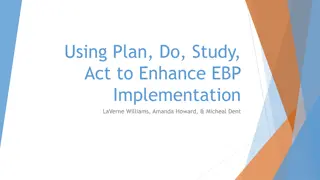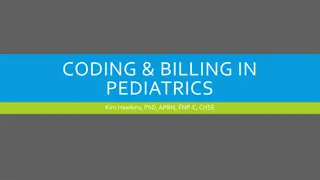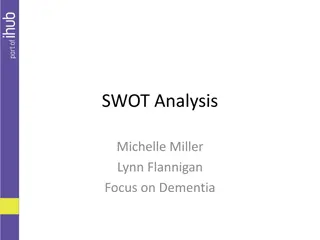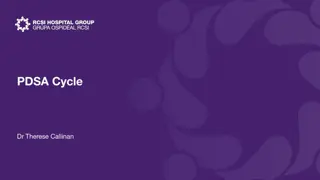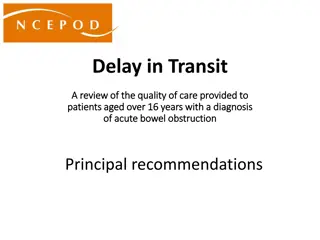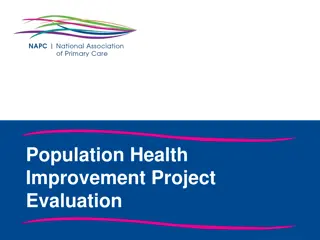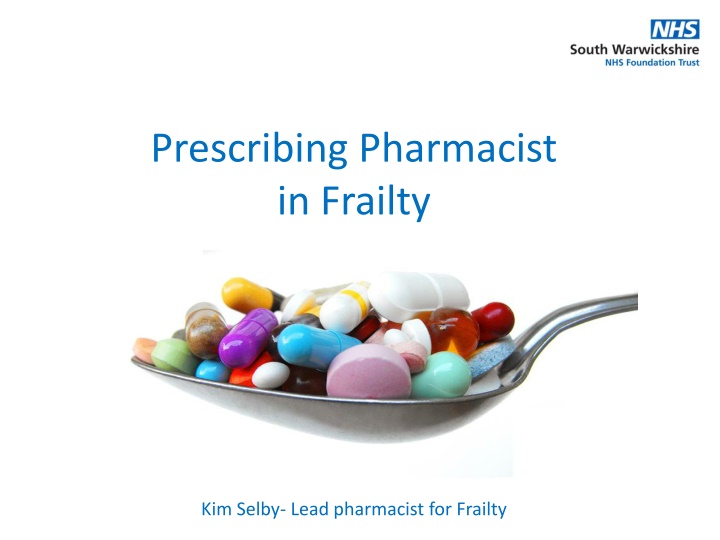
Prescribing Pharmacist in Frailty: Improving Care for Vulnerable Patients
Enhance patient care for vulnerable individuals with frailty through the role of a prescribing pharmacist. Learn about frailty syndromes, hospital challenges, and the implementation of an Acute Frailty Service Provision. Explore a successful Frailty PDSA initiative that introduced a Frailty Assessment Unit, led by Kim Selby, emphasizing medication management and interprofessional collaboration.
Download Presentation

Please find below an Image/Link to download the presentation.
The content on the website is provided AS IS for your information and personal use only. It may not be sold, licensed, or shared on other websites without obtaining consent from the author. If you encounter any issues during the download, it is possible that the publisher has removed the file from their server.
You are allowed to download the files provided on this website for personal or commercial use, subject to the condition that they are used lawfully. All files are the property of their respective owners.
The content on the website is provided AS IS for your information and personal use only. It may not be sold, licensed, or shared on other websites without obtaining consent from the author.
E N D
Presentation Transcript
Prescribing Pharmacist in Frailty Kim Selby- Lead pharmacist for Frailty
Overview Introduction Objectives of the PDSA How we did it Outcomes Plans for the future
What is frailty? A reduced ability to withstand illness without loss of function. A minor event can trigger major changes in health from which the patient may fail to return to their previous level of health.
Frailty Syndromes Falls (e.g. collapse, legs gave way, found lying on floor ). Immobility (e.g. sudden change in mobility, gone off legs stuck in toilet ). Delirium (e.g. acute confusion, sudden worsening of confusion in someone with previous dementia or known memory loss). Incontinence Susceptibility to side effects of medication (e.g. confusion with codeine, hypotension with antidepressants).
Frailty in the hospital setting Older people with frailty account for: 5-10% of people attending ED 30% of patients in acute medical units These patients are especially vulnerable to: Delays in hospital Deconditioning- bedrest and inactivity (adding to the presenting problem)
Acute Frailty Service Provision NHS improvement expects all type 1 ED Trusts to provide an acute frailty service for at least 70 hours per week by 31 December 2019 Patients should have input from the wider MDT: Physiotherapists Occupational therapists Pharmacists Case managers
Frailty PDSA SWFT decided to trial opening a Frailty Assessment Unit (FAU) for a period of 2 weeks in June 2018. Patients referred from GPs or directly from A&E Reviewed by the whole MDT in the assessment area- ACPs, consultant, physiotherapists, occupational therapists and pharmacists
Frailty PDSA For the 2 week PDSA the frailty assessment unit was covered by a prescribing pharmacist Objectives were: Complete level 2 medicines reconciliation at the point of admission to the FAU (much earlier on in the patient journey) Accurately prescribe current/new medications if necessary Complete medication reviews using the STOPP START criteria Falls reviews and bone protection Facilitate discharges and communication of medication changes with primary care
Number of patients reviewed 67 Patients on FAU 60% 40% Seen by a pharmacist Not seen by a pharmacist 9% 16% 12% 1.5% 1.5% Day of no pharmacist cover Not seen due to time constraints After 5pm Seen in ADU Clinic attender
Level of medicines reconciliation 2%3% 95% No medicines reconciliation Level 1 medicines reconciliation Level 2 medicines reconciliation
Medication reviews 40 Patients seen by a pharmacist 88% 35/40 78% 31/40 85% 34/40 Received medication reviews Received falls Reviews Changes/interventions made 44% 15/34 56% 19/34 Interventions to prescription chart Changes to Drug History 47% 9/19 53% 10 /19 Out of the 34 changes to medication made 41% were involving critical medication Primary medication changes Secondary admission prevention medication changes
Successes Reduced length of stay for patients >75 years Improved patient flow through the hospital Patients seen by frailty team much earlier on in admission Earlier medicines reconciliation STOPP START medication reviews to prevent future admissions Bone health Improved communication with primary care regarding medication changes Training of the wider MDT regarding medication issues
Limitations of the PDSA Pharmacists not able to see all patients due to hours of work- available 8.30-5pm Pharmacist cover on 9 out of 10 days of the PDSA Pharmacists also providing cover to AMU so could not be present on FAU all day Pharmacist not always informed of patients in a timely manner- 11 patients not seen
Outcome of the PDSA 5 day ACP led frailty service now operating 8am-8pm Direct referrals from A&E/ ACPs actively highlighting suitable patients Direct referrals from GPs and paramedics Full time Band 8a prescribing pharmacist for Frailty funded by the Trust working 8.30-5pm 5 days a week Funded to complete the advanced health assessment module
Now and in the future Assisting with clerking of patients Teaching- junior doctors, nurses, medical students Based on the frailty assessment unit Joins frailty ward round on AMU Future- further progression down ACP pathway?

